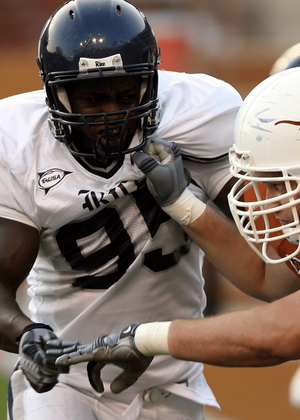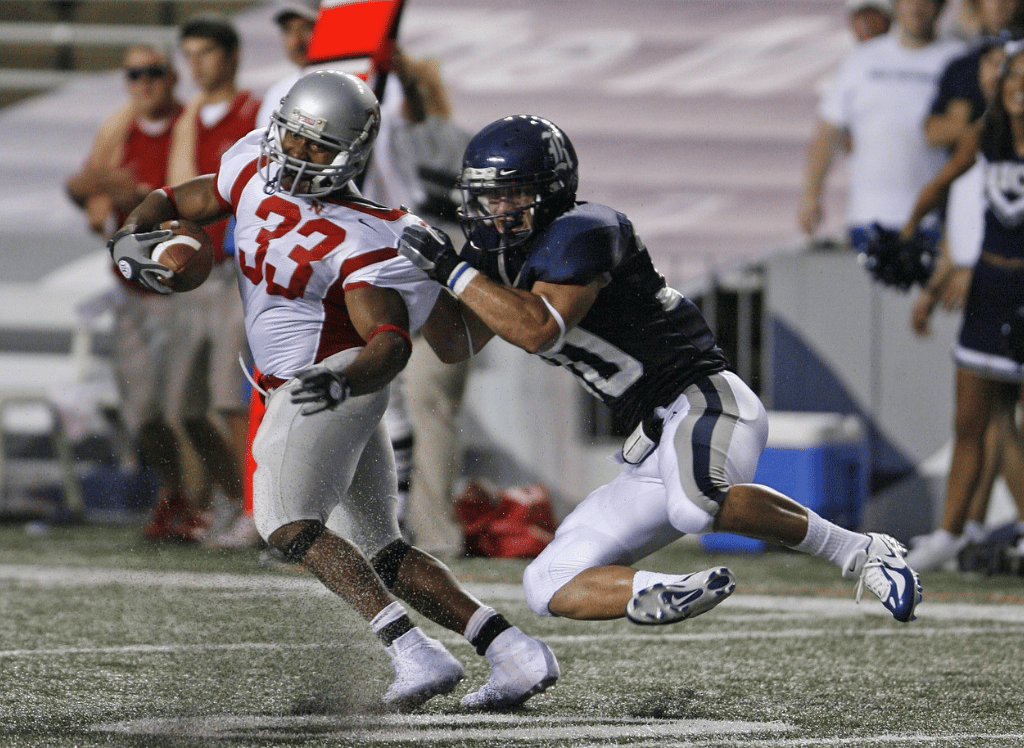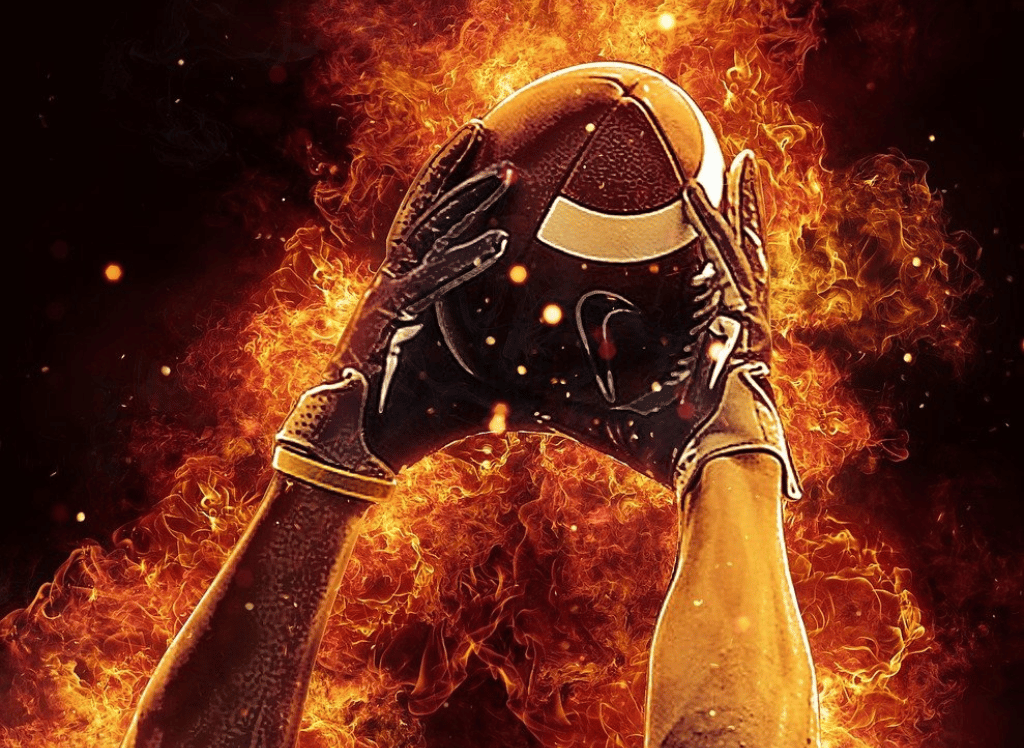Are you ready to dive into the addictive world of fantasy football? If you're new to the game of football, learning how to play fantasy football is an exciting way to enhance your enjoyment of the sport and compete with friends.
In this guide, we’ll walk you through everything you need to know to play fantasy football like a pro, from joining a league and drafting your dream team to managing your roster and navigating through the playoffs. Let’s gear up for an action-packed season.
- Join a fantasy football league and build your dream team with strategic drafting.
- Prepare for the draft by researching players, understanding ADP and creating cheat sheets.
- Maximize success by managing rosters, setting weekly lineups, and making smart trades throughout the season to compete in playoffs and win the championship!
Joining a Fantasy Football League
Finding a site that hosts year-long fantasy leagues is the first step.
Sign up online and join in the excitement!
With a plethora of fantasy football leagues available, you’ll want to choose one that aligns with your availability, skill level, and enthusiasm. After selecting a league, get to know its rules, roster, and scoring settings - they can significantly affect your strategy as they vary widely across leagues.
In fantasy football, you can expect to have 8-12 players (Managers) join your league, making the fantasy football season more competitive and enjoyable. Two essential elements that make a fantasy football league successful are size and scoring type, which contribute to the overall experience of playing fantasy football. As you explore the various league options, you’ll discover exciting ways to accumulate points for the performance of the players you draft and the structure of your fantasy team roster.
In head-to-head play, weekly matches pit your team against different opponents, with the highest scoring team declared the winner.
Teams in a total points league bring thrilling excitement to the season as they battle for points. Points accumulate throughout the entire season, adding to the drama.
Once you’ve joined a fantasy football league, you’re set to embark on an exhilarating journey with your league mates, from draft day to the fantasy championship. So gear up, study the league settings and rules, and prepare to give smack and dominate!
Drafting Your Dream Team
The draft, an intense process of selecting players for your team, plays a pivotal role in your season-long success. To ensure you make the most of this opportunity, you’ll want to focus on key positions such as running backs (RBs) and wide receivers (WRs), which form the core of your roster. Not only do these positions often yield the most points, but they also offer the most depth, allowing you to build a formidable fantasy team.
During the drafting process, relying on rankings and sidestepping autodraft is advisable - active participation empowers you to make strategic decisions influenced by league settings and player availability. Additionally, consider delaying the selection of a kicker and defense, as these positions typically offer less value compared to RBs, WRs, and even tight ends (TEs). By following these strategies, you’ll be well on your way to drafting a dream team that can dominate the competition.
Preparing for the Draft
To maximize success in your fantasy football league, here are some tips:
- Understand your league’s rules, roster requirements, and scoring settings before the draft.
- Start by researching players, examining player rankings, stats, and projections to create a well-informed draft strategy.
- Consider Average Draft Position (ADP), which indicates the average position a player is drafted in a fantasy football league.
By following these tips, you’ll be better prepared for your fantasy football draft and increase your chances of success.
With a solid understanding of your league rules and the available players, it’s time to create a cheat sheet to help you dominate the draft. Organize players by position, rank them according to their potential value, and add notes regarding their strengths, weaknesses, and any relevant insights. This cheat sheet will serve as your guide during the draft, allowing you to make informed decisions and adapt your strategy as needed.
Understanding the various draft types like auction, best ball, 2QB/Superflex, dynasty, keeper, and standard redraft leagues is vital during your preparation phase as they can shape your overall strategy. Be aware of the number of members in your league, as this information can help tailor your recommendations and ADP to the appropriate round, ensuring a more successful draft experience.
By thoroughly researching players, understanding ADP, and creating a cheat sheet tailored to your league’s rules and settings, you’ll be well-prepared to tackle the draft with confidence and secure a competitive team for the upcoming season.
Draft Day Strategies
Flexibility is paramount on draft day. Adapting during the draft enables you to exploit unexpected value drops or capitalize on players gaining value, thereby staying ahead of the evolving draft landscape. To stay flexible, have a list of players you’re targeting, be prepared to adjust your strategy on the fly, and be willing to take risks.
When identifying high-potential players, look for those with high ceilings, significant growth potential, and the ability to exceed their draft position. Additionally, consider your league’s scoring system and the players already chosen in the first few rounds when making decisions about drafting RBs or WRs in the later rounds.
Bye weeks play a crucial role in your team’s success throughout the season, so it’s essential to consider them when drafting players for your roster. Ensure that the majority of your players don’t have the same bye week, and target players who have a bye week when your opponents do not, as this can give you an edge during head-to-head matches.
By employing these draft day strategies, you’ll be well-equipped to navigate the unpredictable nature of the draft, make informed decisions, and build a powerful team that can compete throughout the season.
Setting Your Weekly Lineup
Upon drafting your dream team, shifting focus to setting your weekly lineup becomes vital, a key aspect of managing your fantasy football team. Each week, you’ll need to fill the following positions in your starting lineup to maximize your chances of success:
- 1 quarterback (QB)
- 2 running backs (RBs)
- 2 wide receivers (WRs)
- 1 tight end (TE)
- 1 kicker (K)
- 1 defense/special teams (D/ST)
- 1 FLEX position
Keep abreast of player injury designations and make required lineup adjustments before game time to maintain the strongest lineup each week. Trusting projections can also help guide your lineup decisions, as these projections take into account various factors, such as player performance, opposition strength, and game conditions.
Another crucial aspect of setting your weekly lineup is understanding the FLEX position. This position offers flexibility in choosing either a RB or WR, and some leagues even allow for a TE or QB to be played at the FLEX position. Utilizing the FLEX position strategically can give you an edge over your opponents, especially during bye weeks or when key players are unavailable due to injury.
By diligently setting your weekly lineup, staying informed about player injuries, and utilizing the FLEX position effectively, you’ll be well on your way to achieving fantasy football success.
Roster Management Throughout the Season
To unlock your team’s potential and stay competitive, diligent roster management throughout the NFL season is a must. This includes making savvy waiver wire pickups, acquiring free agents, and executing strategic trades to improve your team’s overall performance.
The waiver wire is an invaluable tool for adding and dropping players in fantasy football. Every team has the opportunity to claim any available player, with the team holding the worst record having the greatest chance of being awarded the player if multiple teams try to claim them. Staying on top of waiver wire pickups throughout the season can help you address team needs, adapt to injuries, and potentially discover breakout stars.
In addition to utilizing the waiver wire, executing smart trades with league mates can significantly improve your team’s performance. When making trades, consider factors such as player value, team needs, and league trends to ensure you’re making a trade that benefits your team in the long run.
By staying proactive in roster management and adapting to the ever-changing landscape of the NFL season, you’ll increase your chances of success and enjoy the thrill of playing fantasy football.
Understanding the Waiver Wire
The waiver wire, a thrilling process, lets fantasy football managers claim players not currently on any team’s roster. Each league has a waiver priority, determined by the success of the previous week, which influences your chances of claiming a desired player.
Stay updated on player performances, injuries, and emerging NFL trends to maximize the benefits of the waiver wire. Adding players on waivers overnight Tuesday into Wednesday is the perfect time to get your team ahead of the competition. Moreover, don’t be afraid to make multiple waiver claims, as this can increase your chances of securing valuable players who can make an impact on your team.
When targeting players on the waiver wire, consider how they can fill specific team needs and contribute to your overall success. Keep in mind that the waiver wire can be a competitive process, so being strategic and proactive in your claims can give you an edge over your league mates.
Making Smart Trades
Another key aspect of managing your fantasy football roster is executing strategic trades. To make smart trades, consider factors such as player value, team needs, and league trends. Keep in mind that trading is not only about acquiring players but also about positioning yourself for success throughout the season.
One important factor to consider when making trades is the trade deadline, which typically takes place between Weeks 11 and 13 in most leagues. This deadline signifies the last opportunity to make trades, so it’s essential to evaluate your team’s needs and make any necessary moves before the deadline passes.
Another key to successful trading is being aware of the value of your players and understanding that their worth is ultimately determined by how much someone else is willing to give for them. This mindset can help you avoid making lopsided trades that may hurt your team’s chances of success.
By staying informed on player values, being strategic in your trades, and keeping an eye on the trade deadline, you’ll be well-equipped to make smart roster moves that can significantly improve your team’s performance throughout the season.
Navigating Bye Weeks and Injuries
Bye weeks and injuries, inevitable aspects of the NFL season, require effective management for your fantasy football success. When drafting your team, it’s not essential to avoid players with the same bye week, but it’s wise to ensure that the majority of your players don’t share the same bye week.
During bye weeks, you may need to rely on your bench players or the waiver wire to fill gaps in your starting lineup. This is where having a well-rounded roster and staying proactive on the waiver wire can pay off, ensuring your team remains competitive even when key players are unavailable.
When dealing with injuries, it’s essential to:
- Stay informed about player injury designations
- Make lineup adjustments as needed
- Utilize the waiver wire and execute trades to help replace injured players and maintain a competitive roster.
By employing effective strategies to navigate bye weeks and injuries, you’ll be better prepared to handle the unique challenges of the NFL season and maintain a strong fantasy football team.
Fantasy Football Playoffs and Championship
As the regular season concludes, the focus shifts to the thrilling world of fantasy football playoffs and championships. The fantasy playoffs typically feature a single-elimination bracket, with the victors advancing to the next round. Understanding the most common playoff formats, like single elimination brackets, can give you the best chance to advance to the next round and ultimately secure the league championship.
Success in the championship often depends on which NFL team peaks at the optimal moment. Staying updated about player performances, injuries, and emerging NFL trends is crucial to maximize your chances of success in the playoffs. Making strategic roster moves and lineup adjustments during the playoffs can give you the edge you need to overcome the competition and claim the league title.
One potential risk to be aware of when playing a fantasy championship in Week 18 is that several teams may choose to rest their starters in that week, potentially leaving you without some of your key players. Staying informed about team strategies and being prepared to make adjustments to your lineup can help mitigate this risk and give you the best chance of success in the championship.
By staying proactive and adapting your strategies throughout the fantasy playoffs, you’ll be well-positioned to compete for the league championship and enjoy the thrilling culmination of the fantasy football season, which many consider the ultimate fantasy season.
Bonus Tips for Success
In addition to the strategies and advice covered so far, there are a few more bonus tips that can help new fantasy managers excel in the game. First, consider subscribing to a fantasy football podcast or other expert resources that provide helpful tips, strategies, and tools to gain a competitive edge.
Another valuable tip for new fantasy managers is to think outside the box and get creative with their strategies. This can involve taking risks on lesser-known players, employing unconventional lineup strategies, or staying ahead of emerging trends in the NFL.
Engaging in friendly trash talk with your league mates can add another layer of fun to the fantasy football experience.
By staying informed, thinking creatively, and embracing the fun of fantasy football, you’ll be well on your way to enjoying the game and achieving success in your league.
Embracing the Fun of Fantasy Football
Finally, remember, the essence of playing fantasy football lies in the fun and enjoyment derived from its unique challenges and rewards. While mastering various strategies and staying informed about player performances is crucial to your success, don’t forget to savor the game and appreciate the excitement it brings to the NFL season.
Fantasy football presents an exciting challenge as you strategically manage a team of players and make decisions that will determine the success of your team in the fantasy league. Moreover, there are great rewards such as bragging rights, prizes, and the satisfaction of outmaneuvering your opponents as you play fantasy football.
By embracing the fun of fantasy football and engaging in friendly competition with your league mates, you’ll create lasting memories and deepen your love for the game. So gear up, draft your dream team, and get ready for an action-packed fantasy football season!
Frequently Asked Questions
Fantasy football can be complex and overwhelming for beginners, leaving them unsure of how to get started and play. With so many rules, strategies, and player statistics to consider, it's easy to feel lost and discouraged. Without proper guidance, your experience in fantasy football can quickly become frustrating and disappointing. We hope you can learn more by exploring through the most Frequently Asked Questions section and take your fantasy team to the next level.
How do you play fantasy football game?
Playing fantasy football involves selecting your own team of players, setting a lineup each week, and competing with other players in the league to see who has the most fantasy points at the end of the week. Points are earned for touchdowns and other offensive plays.
What positions to pick first in fantasy football?
This year, the best way to start your fantasy team is with wide receivers in the first two rounds - try and get three or four top-tier options before considering another position.
With these pass-catchers offering consistent points, you’re sure to be off to a good start!
How does fantasy football work simple?
Fantasy football lets you become the owner of your own team of NFL players, setting lineups each week to compete against other owners and score points based on the performance of your players.
With each touchdown, run or catch, you can gain fantasy points and ultimately be crowned the winner of your league!
How do I manage my roster throughout the NFL season?
Manage your roster throughout the NFL season by utilizing the waiver wire, acquiring free agents and executing strategic trades - all designed to help you improve your team’s overall performance.
What strategies can help me navigate bye weeks and injuries?
Staying well-rounded, active on the waiver wire, and making smart lineup adjustments are key strategies to navigate bye weeks and injuries.
Summary
Playing fantasy football is an exciting and rewarding experience that allows you to enhance your enjoyment of the NFL season and test your skills as a team manager. By following the strategies and advice outlined in this guide, you’ll be well-equipped to draft a competitive team, manage your roster throughout the season, and navigate the playoffs on your way to the championship. So embrace the fun of fantasy football, engage in friendly competition, and enjoy the thrilling journey that awaits you!
Check out our other football articles:









